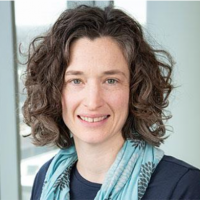It is well-known that major health disparities exist between race-ethnic
groups -and between men and women in some circumstances- due not only to
differences in the capacity of groups to afford particular forms of
preventative and medical treatment (e.g., having systematic access to health
insurance mechanisms), but also owing to the frequency in which specific
treatments are sought of and prescribed, e.g., as health care providers and
social workers use cues on what treatments to recommend based in part on
perceptions of who is at higher or lower risk based on race-ethnicity and
gender cues.
How doctors recommend, parents decide on whether their children need, and
adolescents push or shy away from getting the Human
Papillomavirus (HPV) vaccine, and at what age it is administered, is a
case-in-point for these issues. Teenage “girls” -particularly perhaps
of race-ethnic groups perceived as being more sexually active- used to be (and,
to some extent, are still) often thought of as the main subjects to recommend
the vaccine, in part because of the clear link between HPV and cervical cancer.
We will leave it for another time to delve on the externalities of prescribing
boys with the vaccine to reduce cervical cancer in women a couple of decades
down the road. Suffice to say that, since these seminal studies on cervical
cancer came out, HPV has also been associated with other types of cancer that
also and particularly affect men, like those of the neck and throat. And thus,
boys have been encouraged (and covered) to take the vaccine.
The issue is of particular relevance for Asian men -specifically of
Southeast Asians, in the United States mainly composed of people of Vietnamese,
Laotian, Cambodian, and Hmong origins- given their somewhat higher rates of
cancers for which HPV is an important risk factor. Much is left to be
understood about how these processes operate as they combine the implicit (and,
sometimes, explicit) biases of health care practitioners and others with the
stigma of seeking for STI prevention in particular communities.
It is at the intersection of how health practices and sexuality are
racialized and gendered that Kim Truong-Vu found her calling. While pursuing a
double-major in Sociology and Asian American Studies at the University of
California – Santa Barbara, Truong-Vu learned about human sexuality from
renowned scholars Janice and John Baldwin while listening to and trying to help
her fellow students navigate the difficult terrain of sexual health as a peer
health educator at her dorm first, and the student health center later, learning
the social science of sexuality while witnessing the shame and stigma
associated with sexual health decisions and outcomes, and how many of these
barriers are gendered and racialized.
And thus, Truong-Vu’s mixed-methods dissertation is uncovering how HPV
vaccination decisions are driven by these forces. In a quantitative piece, Kim
already showed that otherwise small race-ethnic differences in self-reported
HPV vaccination amplify once examined under an intersectional lens: Asian boys
are least likely to be vaccinated, and these disparities are not explained in
any way, shape, or form by socioeconomic disparities (on the contrary, Asian
families have higher average socioeconomic status and, as such, the HPV
vaccination rates of Asian boys are even lower than expected once socioeconomic
factors are considered).
Based on the research pointing at Southeast Asian men as particularly at
risk, Truong-Vu is currently carrying out fieldwork among Vietnamese-Americans
in Southern California, searching for the processes and habitus operating
within families, neighborhoods, and the health care system that may be
disproportionately preventing Vietnamese-American boys from vaccinating against
HPV. Soon enough, we will hear more about how these barriers are constituted,
and how they can be disarmed while Truong-Vu produces more research on the
topic and inspires the next generation of scholars in a research institution
near you.








